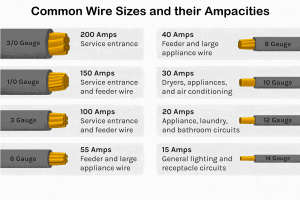How does the 2023 NEC clarify branch circuit conductor voltage limitations?
Overview

A large portion of the conductors used in the electrical field are insulated, meaning there is a coating over the wire that prevents undesired current flow. This insulation has a maximum voltage rating that is not to be exceeded. Voltages higher than the insulations’ rated voltage may result in leakage current or insulation breakdown. Confusingly, Section 210.19 has circuit voltage limitations. The 2023 NEC has clarified right at the beginning of 210.19 that the listed voltage limitations in this section refer to the voltage of the entire circuit, and not the rated insulation voltage.
Applying the 2023 Code
There was confusion in the field as to whether or not the voltage limitations of Section 210.19 applied to the insulation rating of the conductors, or the actual voltage of the circuit. The 2023 NEC has clarified Section 210.19 by adding text declaring that the voltage limitation applies to the voltage of the entire circuit, and not the insulation rating of the conductors. Furthermore, due to the creation of Article 235 (Over 1000V AC/1500V DC), Section 210.19 now specifies that it is for circuits operating at or below 1000 volts AC, or 1500 volts DC. An example of the confusion this clears up is situations where 1000V rated wire only carries 480V. The voltage limitations would be based on the 480V that the circuit operates at, not the 1000V the wire is rated for.
What’s New for the 2023 NEC?
2020 NEC
In the 2020 NEC Section 210.19 was only a title ; “Conductors – Minimum Ampacity”
2023 NEC
In the 2023 NEC Section 210.19 now reads as follows (without informational note):
210.19 Conductors — Minimum Ampacity and Size.
Branch-circuit conductors for circuits not exceeding 1000 volts ac or 1500 volts dc shall be sized in accordance with 210.19(A) through (D).
